The golden era of motoring wasn’t just fins and chrome—it was engineers tossing wild ideas at the wall to see what stuck.
Swivel seats, denim interiors, even headlights that steered with you.
Strap in for a joyride through 25 forgotten features that prove yesterday’s cars were anything but boring.
Seating & Entry Oddities
1. Chrysler Swivel Seats (1959–1960)
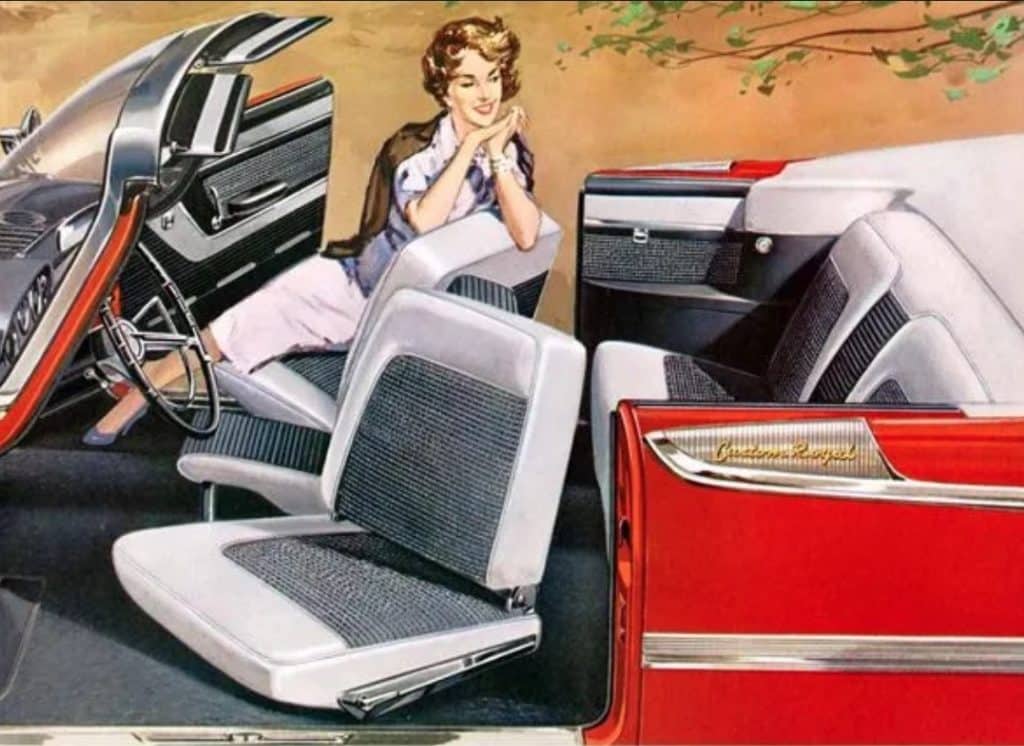
Talk about graceful entrances. Chrysler built front bucket seats that swung out toward the door when you opened it, making it easier to slide in without unladylike gymnastics or tearing suit seams.
A spring-loaded detent locked them for driving. Marketed to moms in pencil skirts and dads in Sunday slacks, the swivel seat was more show-floor sizzle than long-term trend, but when you see one in action you get it.
Getting into a big finned Mopar never looked cooler.
2. Kaiser Darrin Sliding Pocket Doors (1954)

Instead of swinging out, the fiberglass Darrin’s doors slid forward into the front fenders like pocket doors in a hallway.
It saved space in tight parking and gave the tiny roadster a dramatic party trick.
Downsides: the opening was small, the seals were fussy, and crash protection was basically hope and prayer.
Still, nothing else at the time looked like it, and sliding into the fender never stopped being a great car show demo.
3. Ford Swing-Away / Tilt-Away Steering Column (1961–1969 Thunderbird, some Lincolns)
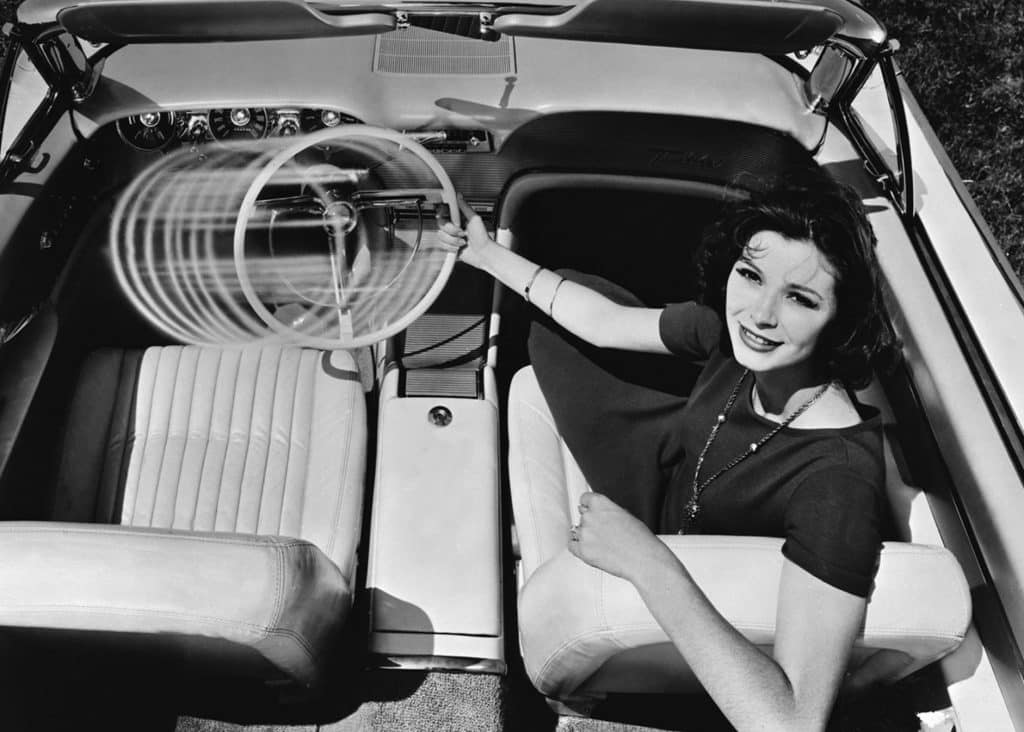
Open the driver door, put the transmission in Park, and the steering wheel gracefully swung several inches to the right (passenger side) or up and away depending on year, clearing space for entry.
Once you were seated and ready, it clicked back to driving position. Pure mid-century futurism.
It didn’t actually change steering geometry while moving, but it told your neighbors you were living in tomorrow.
Later, tilt columns stuck; the swing trick didn’t.
4. Mercury Breezeway Retractable Rear Window (1963–1968)

Full-size Mercurys wore a reverse-angle rear roof with a power glass panel that dropped into the body at the touch of a switch.
Roll it down for flow-through ventilation without buffeting. Kids loved sticking hands back there (not recommended), smokers dumped stale air in seconds, and dog people… well, the dogs loved it.

Water management and complexity limited its life, but a Breezeway dropping its glass at a light still draws a crowd.
5. Nash “Seats-to-Sleepers” Folding Bed (Late 1940s–Early 1950s)
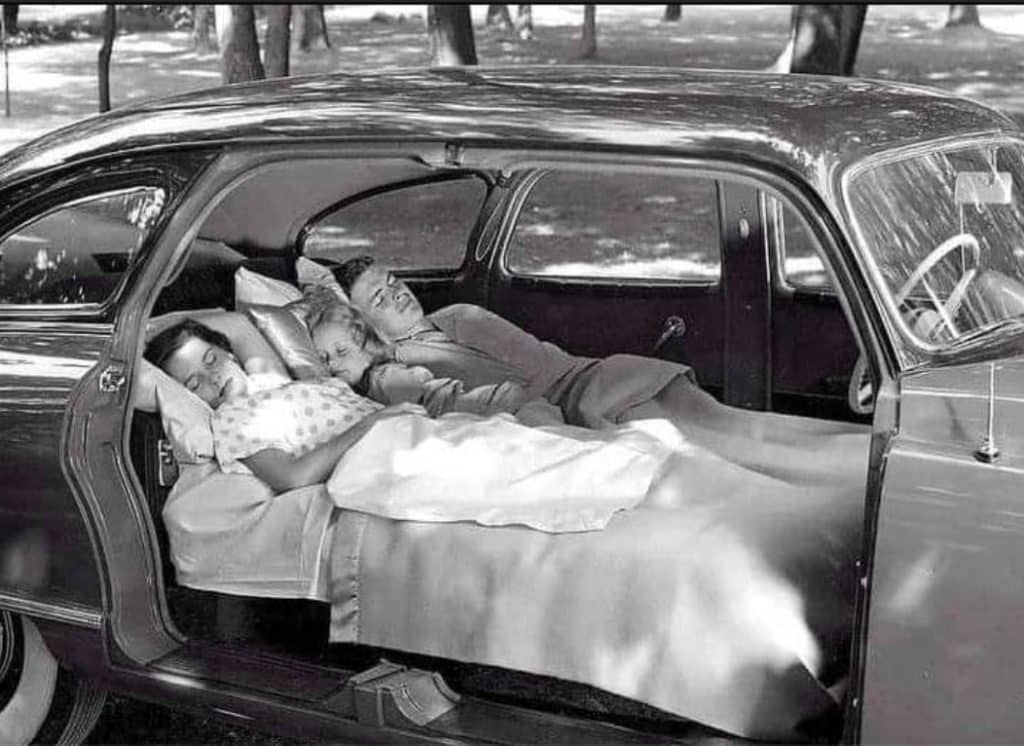
Road motels weren’t everywhere yet, so Nash pitched family travel comfort: front seats that folded flat into the rear bench to make a near full-length bed.
Throw in mosquito netting and you had car camping in a sedan.
Parents used it for roadside naps, courting couples used it for… not napping, and the feature helped sell Nash as the sensible traveler’s car. RV luxury on a war-surplus budget.
Cabin Comforts & Interior Gimmicks
6. AMC Gremlin Levi’s Denim Interior (1973–Late 1970s)
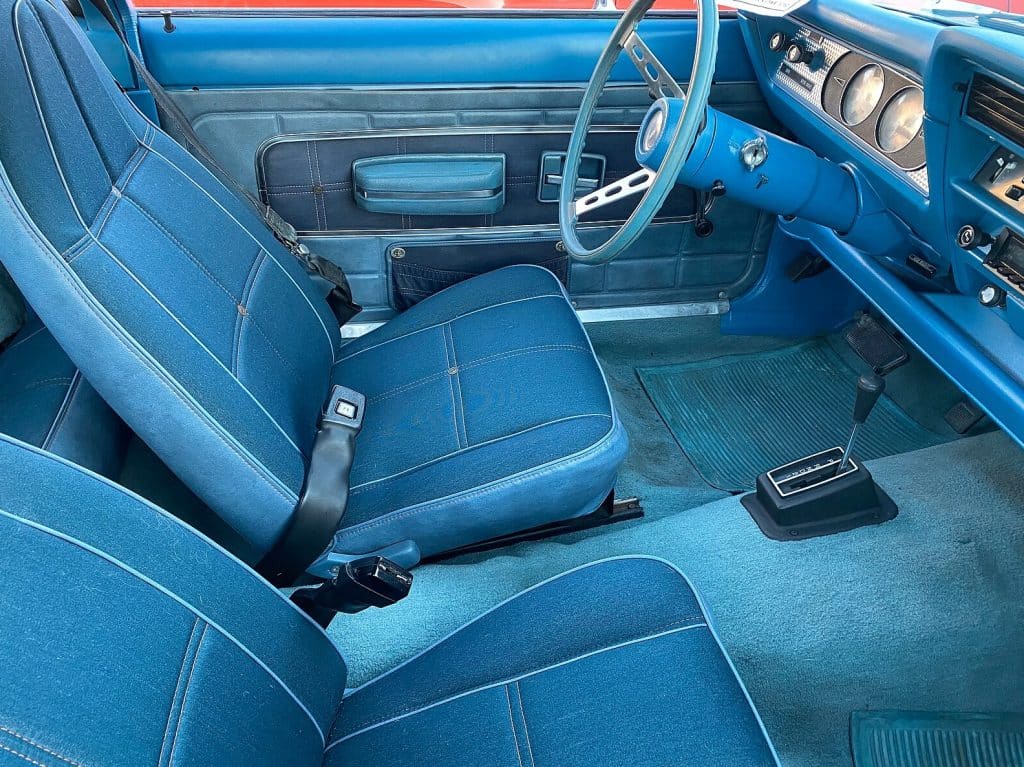
AMC cut a deal with Levi Strauss and trimmed seats in blue denim-look vinyl with copper “rivets” and orange stitching to mimic jeans.
Snap-button pocket flaps finished the look. Actual cotton denim would have worn out fast, so AMC faked the fabric vibe, but the image stuck. Youth-market gold.
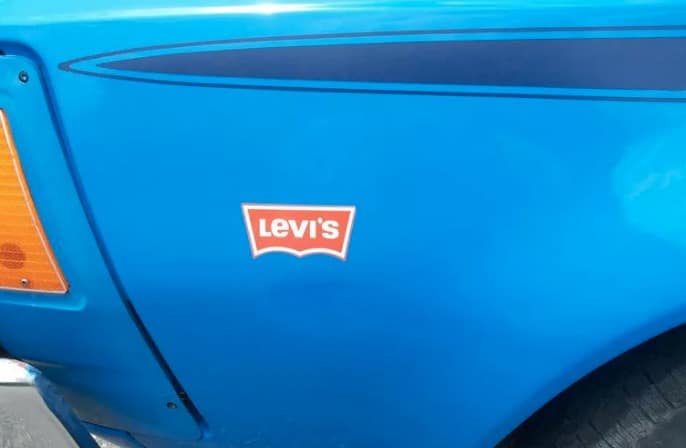
It turned a budget hatchback into a rolling pair of bell-bottoms and remains one of the most cheerfully 1970s interiors ever sold.
7. Chrysler Highway Hi-Fi In-Dash Record Player (1956–1958)

Before cassettes, before 8-tracks, Chrysler let you spin special 16 2⁄3 rpm records under the dash.
The discs held up to an hour of music per side, but they needed thick grooves and a heavy arm to fight bumps.
Hit a pothole and Elvis hiccuped. Records were limited and proprietary, and owners learned quick that smooth roads mattered.
Ridiculous? Sure. But it proved drivers wanted more than AM radio long before streaming.
8. Built-In CB Radio Factory Installs (Mid-1970s)

Smokey and the Bandit culture was so strong that Detroit stuck full CB transceivers in dashboards.
You got a channel selector, squelch knob, external whip antenna, and a mic hooked near the ashtray.
Some paired with the AM/FM unit for speaker output. Truckers, dads on vacation, and teenage hot-shoes all played highway tag with “breaker 1-9” chatter.
Cell phones killed the vibe decades later, but factory CB cars were peak 70s Americana.
9. Gas-Pedal Starter Switch (1930s–1950s GM & Others)
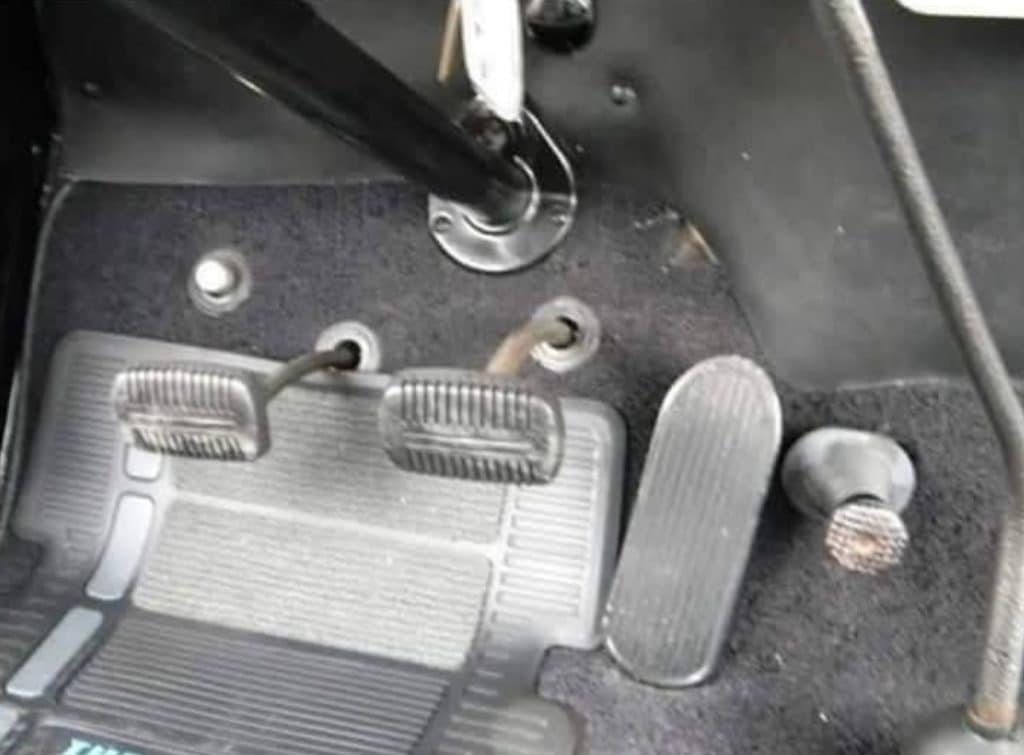
Turn the key to unlock ignition, then mash the gas pedal to the floor.
A switch or carb-mounted linkage engaged the starter motor. Release once the engine fired.
Many carbs even disabled the starter automatically when vacuum rose so you couldn’t grind the gear.
It kept dashboards clean and gave carbureted cars a one-foot start routine.
New drivers stalled constantly until they figured out the trick. Quirky, but it worked.
10. Under-Seat Heaters & Floorboard Toasters (1930s–1940s)

Before standardized dash heaters, many cars tucked heater cores under the front seat. Warm air drifted up around legs like a foot-warmer.
Some units had fans; others relied on convection. They heated rear passengers better than early dash units, but leaks meant hot coolant near carpet and toes, so the layout faded.
Still, in a drafty prewar sedan, a glowing metal under-seat heater made frozen winter rides almost bearable.
Vision, Lighting & Weather Wizardry
11. Cadillac Autronic Eye Automatic Headlight Dimmer (Early 1950s Onward)
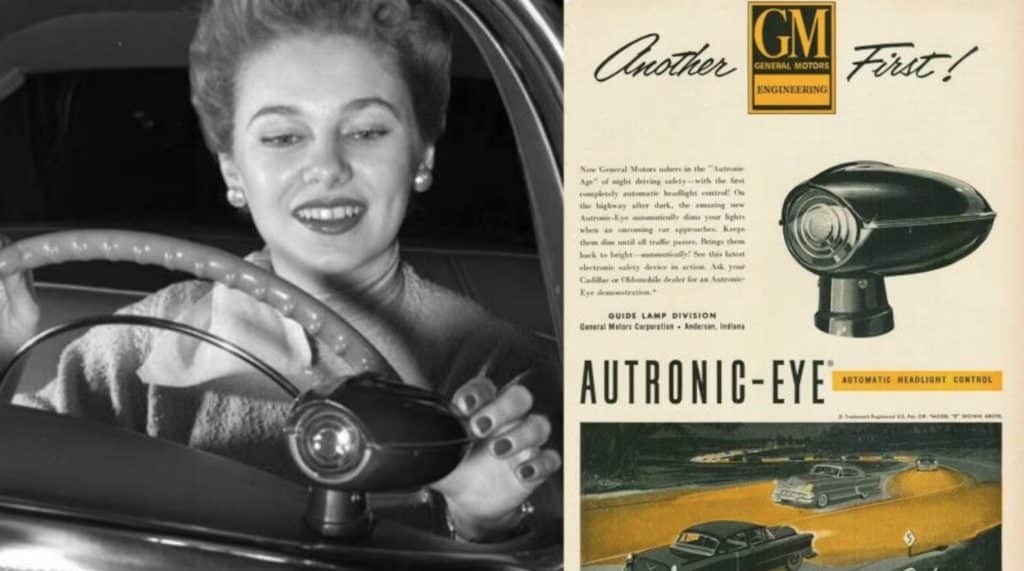
A phototube on the dash “saw” oncoming headlights and dropped your high beams automatically so you didn’t blind other drivers.
Flip a sensitivity dial and it responded sooner or later.
Early units got confused by neon signs and reflective street markers, but the idea was decades ahead of the auto-dimming systems we take for granted now.
Cadillac bragged about courtesy and convenience long before regulators got involved.
12. Tucker 48 Center “Cyclops” Turning Headlamp (1948)
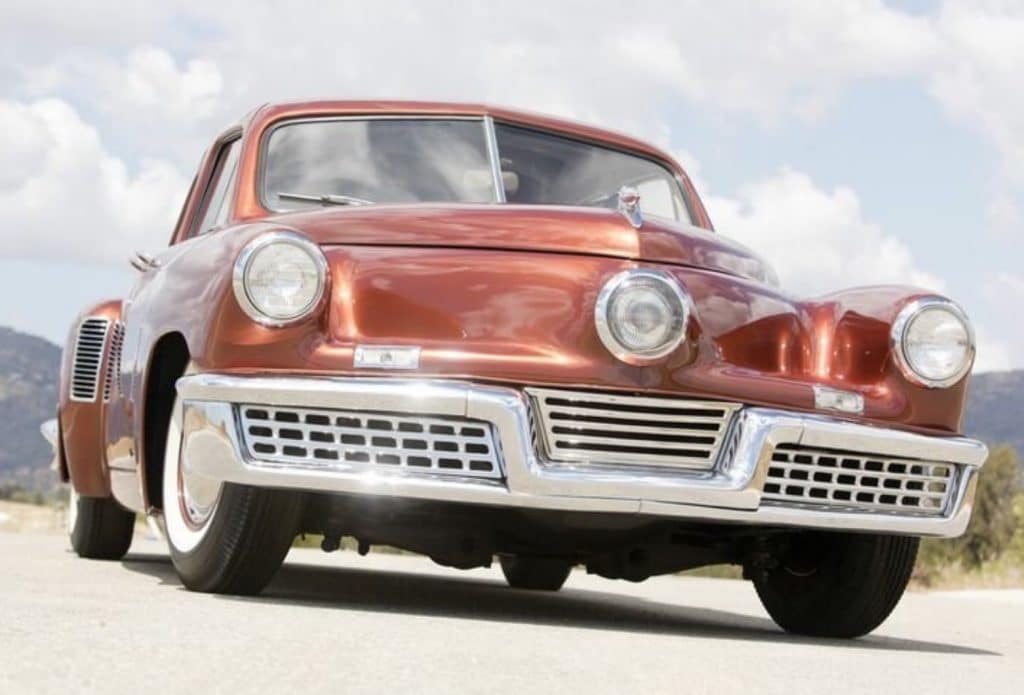
Preston Tucker stuck a third headlight behind the central grille that turned with the front wheels above a certain steering angle.
It lit the inside of curves, farm driveways, and surprise corners.
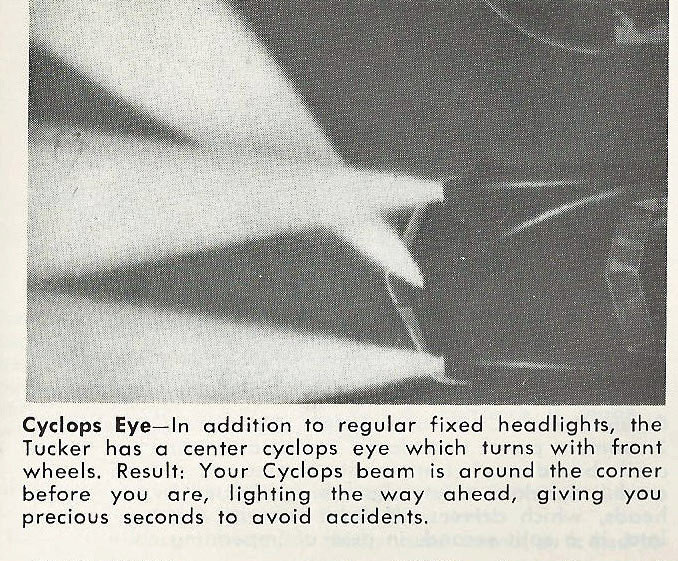
Regulators in some states got twitchy about lamps that aimed away from straight ahead, so not every car shipped active, but the concept was pure aircraft thinking applied to a sedan.
It foreshadowed today’s adaptive headlamps by generations.
13. Citroën DS Directional Headlamps (1967 European Spec)
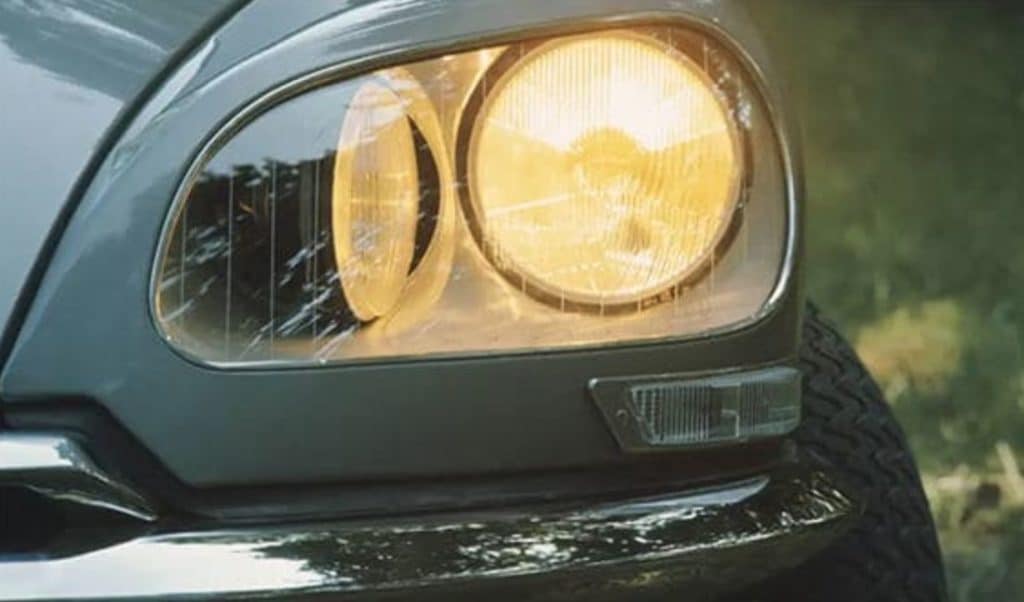
Citroën wired inner high-beam pods to the steering linkage so they pivoted with the wheels. Turn left, light left. Turn right, light right.
The main outer lamps stayed forward. French backroads and foggy villages suddenly got a lot less spooky.
U.S. sealed-beam rules blocked the feature stateside for years, which only added to Citroën’s mystique.
Adaptive lighting? Folks in France had it when most Americans still aimed by guesswork.
14. Headlamp Wipers & Washers (1960s–1970s Saab, Volvo, Others)
Snow, road salt, and slush knock headlights down to candlepower. Scandinavian makers answered with tiny wiper arms and squirters just for the headlamp lenses.
Hit the button with your windshield wash and the lamps got a scrub. The novelty wowed U.S. buyers in the 70s, though freezing weather could ice the mechanism.
Today’s high-pressure headlight washers owe a nod to these charming little insect arms flapping on frosty nights.
15. Fiber Optic Lamp-Out Monitors (Late 1960s–Early 1980s GM Luxury Lines)
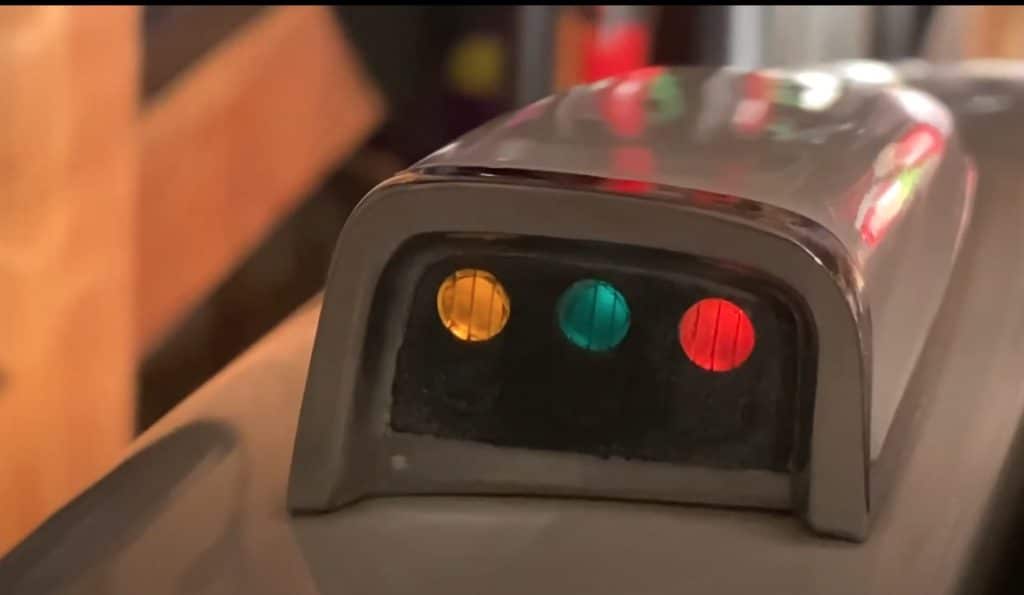
Small plastic “periscopes” sprouted on top of fenders or the rear package shelf. Fiber optic strands ran from bulb sockets to the pod.
If the bulb lit, so did the tiny indicator. One glance told you if a headlight, tail lamp, or brake bulb was working.
No electronics, just light pipes. They looked space-age at night and saved you from walking around the car in the rain. Cheap, clever, and oddly satisfying.
Ride, Handling & Under-the-Skin Innovation
16. Citroën DS Hydropneumatic Self-Leveling Suspension (1955 Launch)
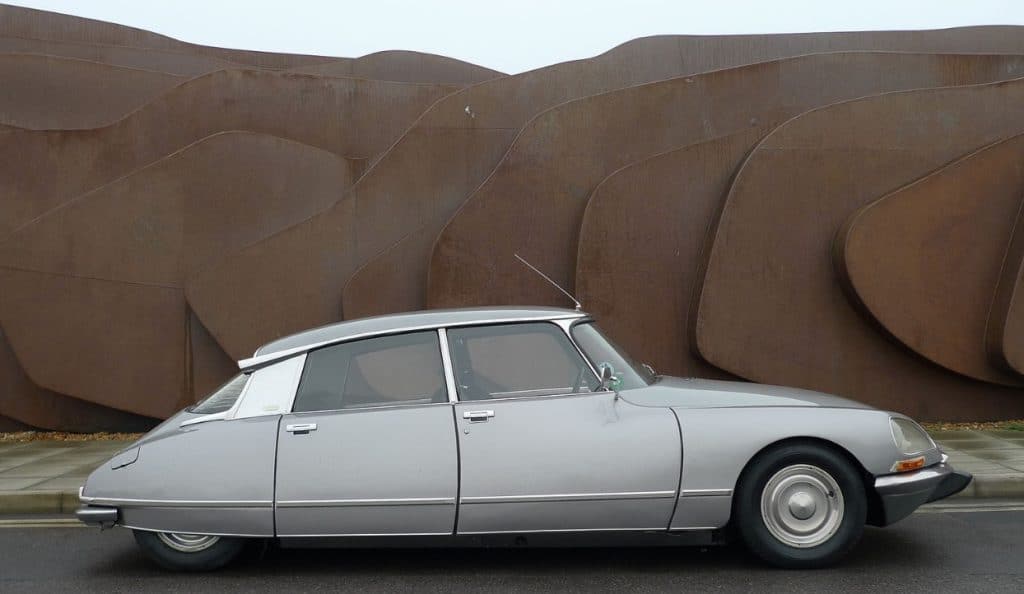
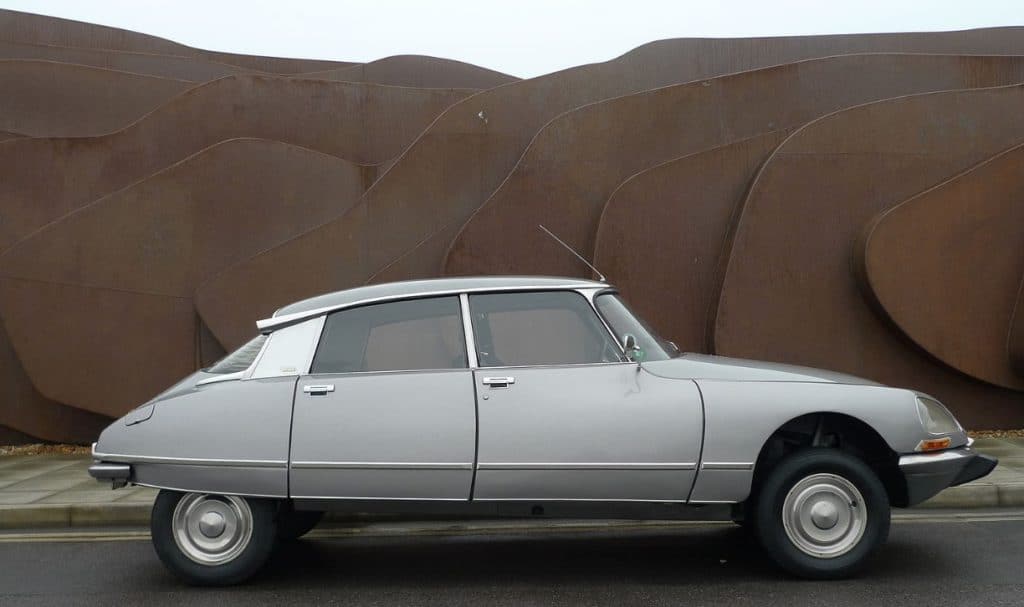
Pressurized fluid, hydraulic spheres, and nitrogen gas replaced steel springs.
The car could raise or lower itself, stay level with passengers climbing in, and glide over potholes like a hovercraft.
You could even change a tire by lifting one end and locking the suspension. It scared American mechanics and delighted engineers.
Once you’ve floated a DS down a rutted lane, every coil-spring sedan feels crude.
17. Packard Torsion-Level Suspension (1955–1956)
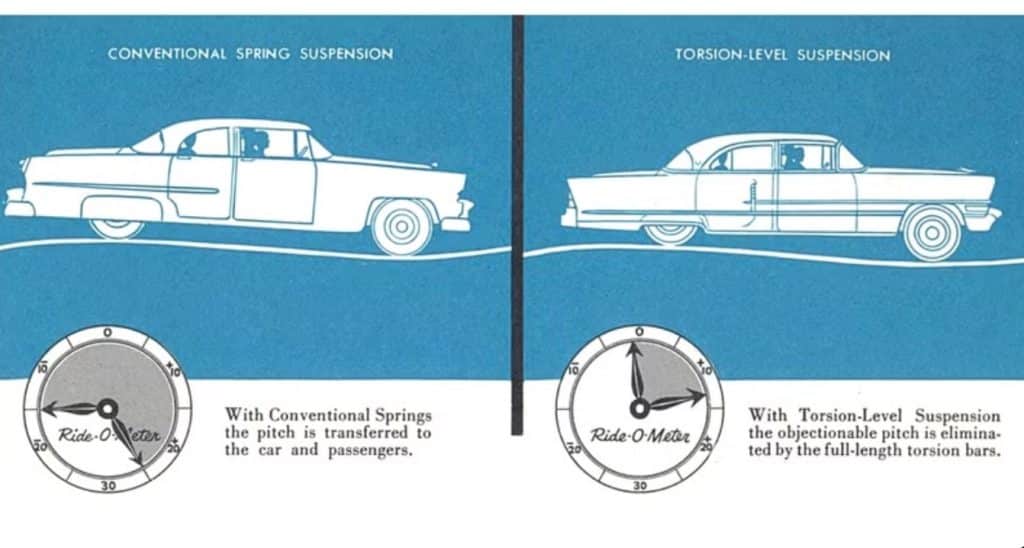
Packard strung long torsion bars front to rear, tying wheel loads together. An electric leveling motor trimmed ride height as passengers and cargo shifted weight.
Result: a surprisingly flat, steady ride that shrugged off speed bumps and driveway angles.
Owners raved; dealers wrestled with adjustments. Packard didn’t live long enough to build on the idea, but for two shining years its big cars rode like silk.
18. Studebaker / Bendix Hill-Holder (1936 Debut, Used Into Postwar Years)
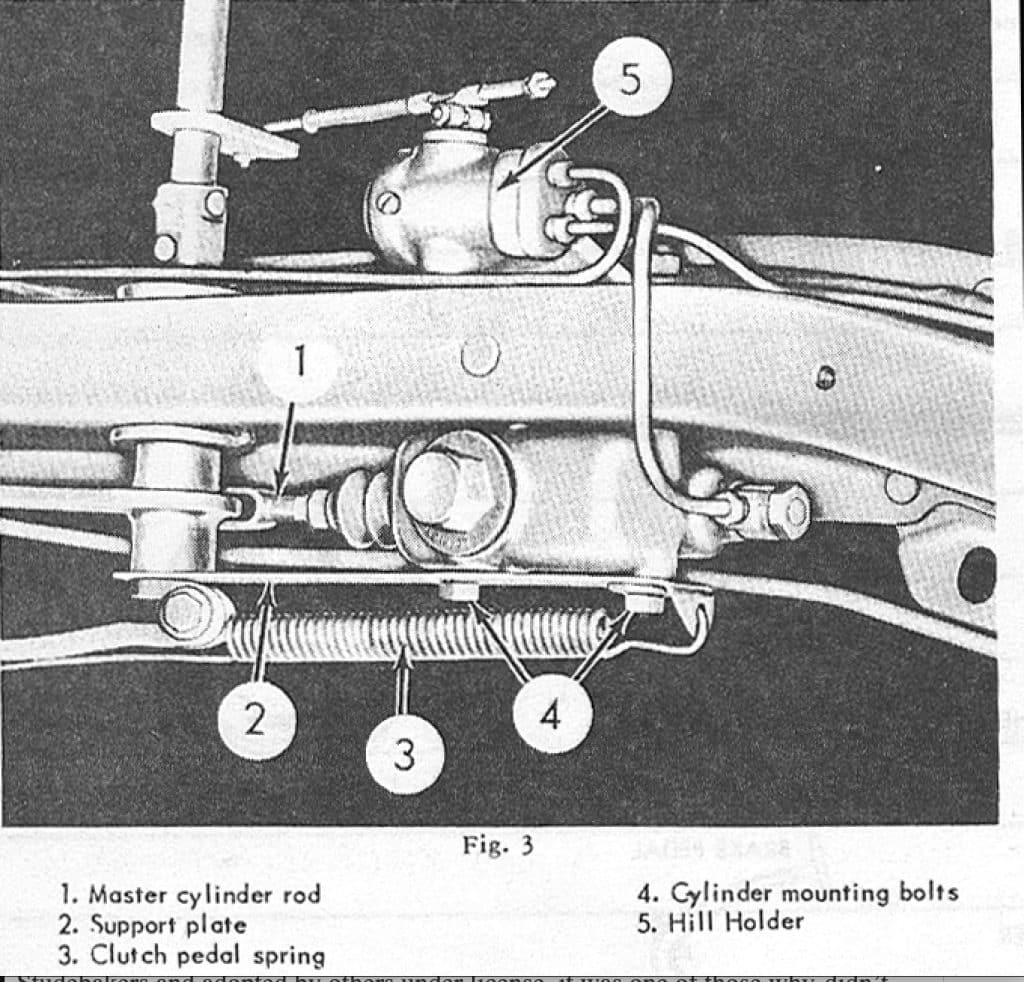
Manual transmission drivers hate rolling backward on hills. The Hill-Holder trapped brake pressure when you came to a stop facing uphill, then released automatically as you let the clutch out.
No need for fancy foot dancing. Used on Studebakers and adopted by others under license, it was one of those why-didn’t-everyone-do-this ideas.
Modern hill-start assist is electronic; this was pure mechanical magic and brake hydraulics.
19. Buick MaxTrac Early Traction Control (1971)
Long before computer stability control, Buick offered a system that watched rear wheel speed versus driveshaft speed.
If the rear spun too fast under acceleration, it cut spark to reduce power. Crude by modern standards and useful mostly on ice or gravel, but it proved Detroit engineers were already thinking about electronic intervention.
It also gave salesmen one more techno-sounding switch to brag about on test drives.
20. Automatic Load-Leveling Air Shocks (Various Late 1960s–1970s Luxury Cars)
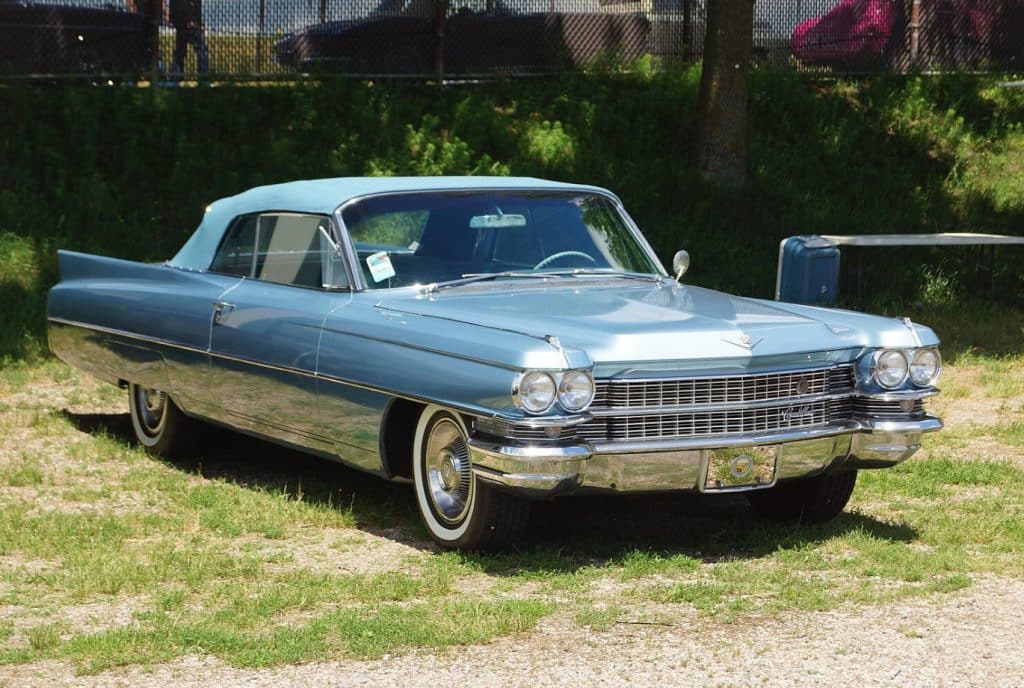
Throw a trunk full of luggage or hitch a boat and most cars sagged.
Luxury models from Cadillac, Lincoln, Olds, and others used air-assisted shocks or compressor-fed bladders to bring the rear back up automatically.
Some sniffed ride height through a linkage; others let you inflate manually at a gas station valve.
The point was to keep headlights level and tailpipes off the pavement without stiffer everyday springs.
Safety (Or Something Like It)
21. GM Air Cushion Restraint System – Early Airbags (1974 Fleet Trials)
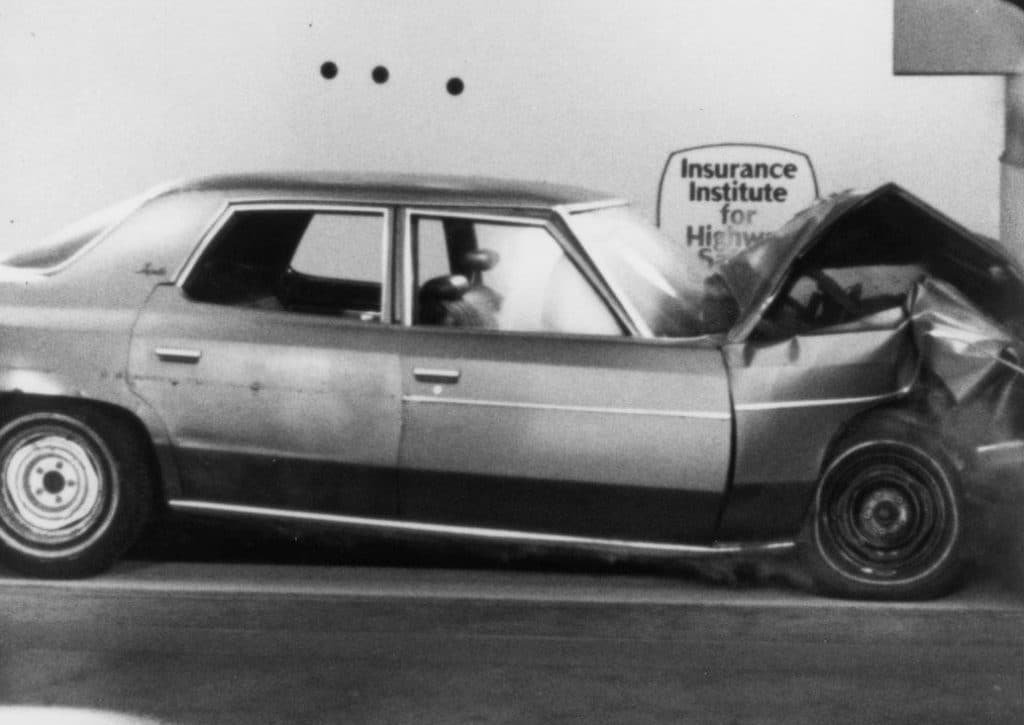
Long before airbags became mandatory, GM built limited-production Oldsmobile Toronado and Buick full-size cars with driver and passenger inflatable restraints tucked in the dash and steering hub.
The system was bulky and expensive and buyers didn’t yet trust exploding cushions, so it faded.
But it worked in crash tests and proved passive restraint could save faces from steering columns.
When airbags came roaring back in the 1980s, engineers already had data.
22. 1974 Seat-Belt Starter Interlock (U.S. Mandate, Then Retreat)
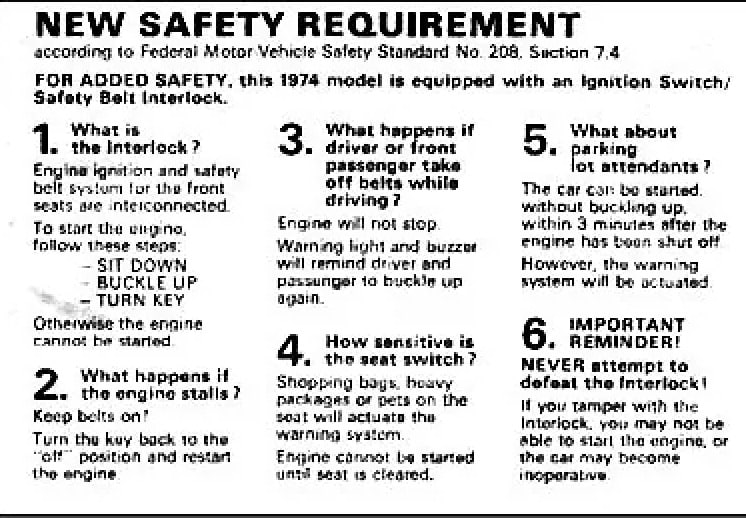
For one brief model year, federal rules forced cars to include a system that prevented the engine from starting unless front seat belts were buckled.
Sensors in the latches told a relay to allow the starter circuit. Public backlash was fierce: belts jammed, groceries clicked buckles, and drivers cursed engineers.
Congress blinked and the rule was watered down fast. Obnoxious, short-lived, unforgettable.
23. Padded Dash & Pop-Out Windshields (Tucker 48 Safety Focus)
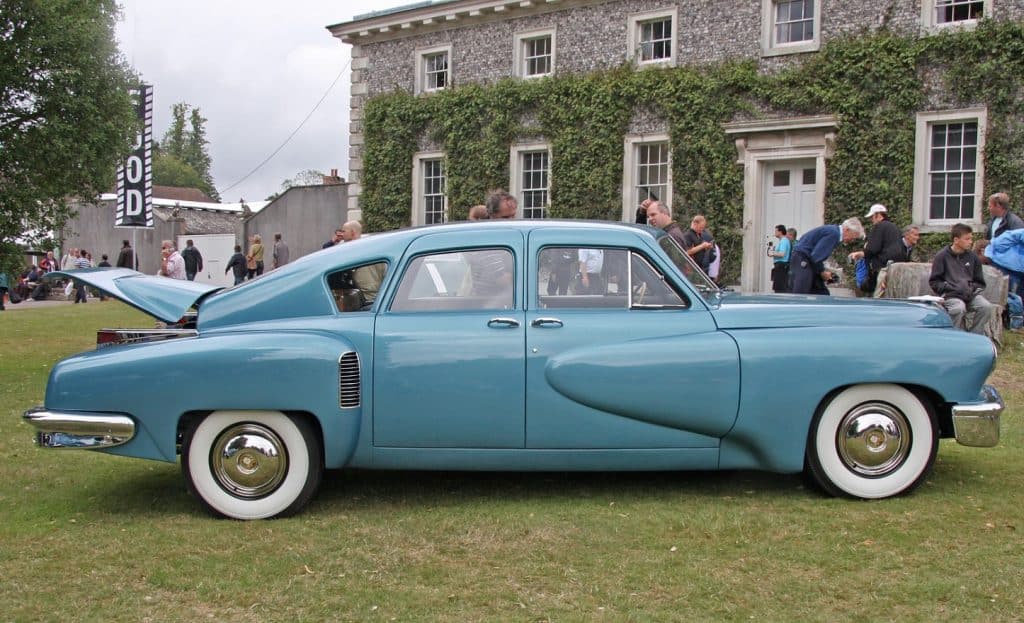
Tucker hyped safety at a time when most makers ignored it.
The 48 featured a padded dash to soften impact and a windshield designed to eject outward in a crash instead of shattering inward.
Add a perimeter frame and seat belts planned but not widely installed and you had one of the earliest whole-car safety campaigns.
Only a handful were built, yet Tucker forced bigger companies to talk about passenger survival.
Gauges, Controls & Driver Feedback
24. Pontiac Hood-Mounted Tachometer (Late 1960s–Early 1970s Muscle Era)
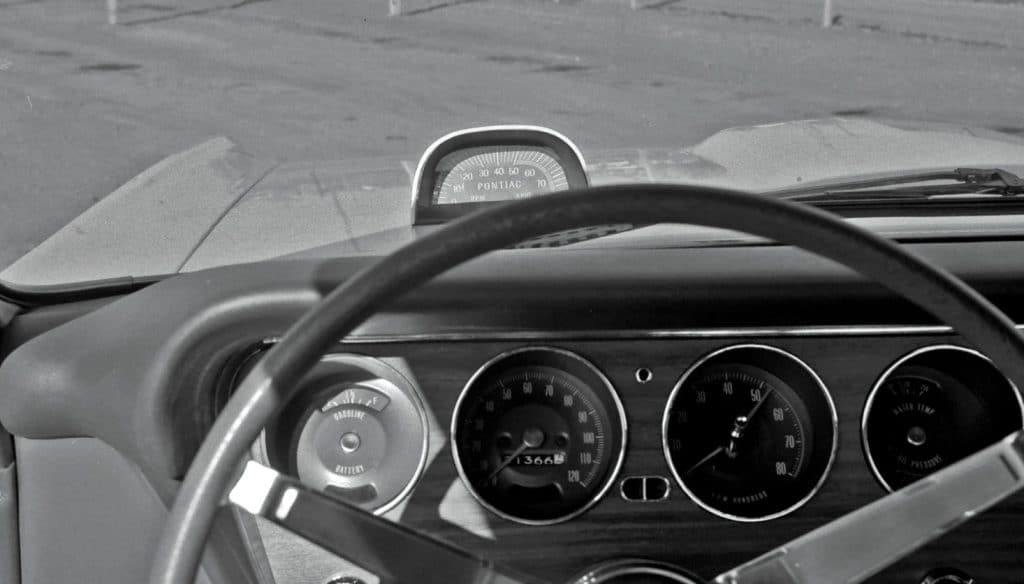
Why bury the tach in a dash pod when you can stick it right on the hood?
Pontiac mounted a weather-sealed tach ahead of the driver so you could watch revs without looking down.
At night the face glowed under a tiny lamp. Racers loved the sightline. Restoration parts keep the legend alive, and even non-Pontiac folks bolt on repros because an external tach just screams street brawler.
25. Speed-Minder / Speed Warning Buzzer (1950s–1970s Assorted Makes)
Set a needle or dial to the speed you wanted to hold. Pass that mark and a buzzer, light, or bell nagged you.
GM, Ford, Mopar and even European makers dabbled. Parents used it to keep teen drivers honest. Salesmen pitched it as a defense against tickets on the new interstates.
It was mechanical cruise control’s tight-fisted cousin: no throttle hold, just guilt and noise. It worked.
Want to Add One?
If you’ve owned, driven, or even just seen a pre-1985 machine with a weird feature that deserves a spot, tell me about it and I’ll build you a reader-submitted add-on list.
Old cars never run out of surprises. Let’s hear yours.
